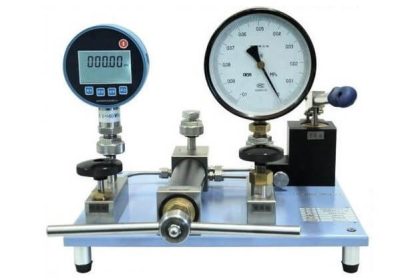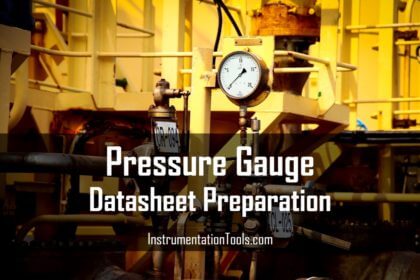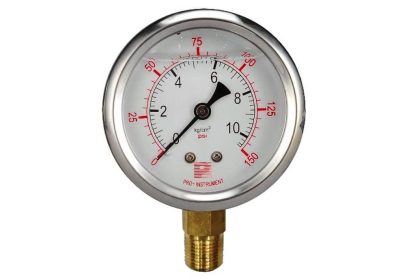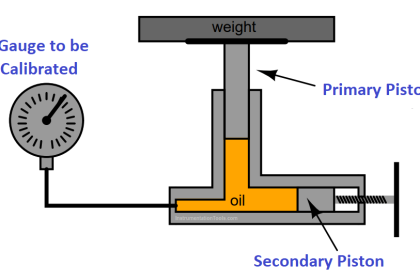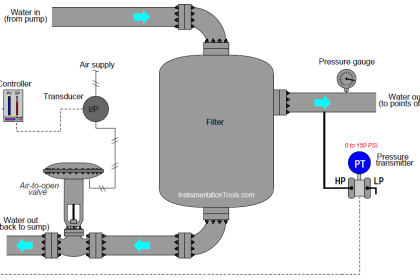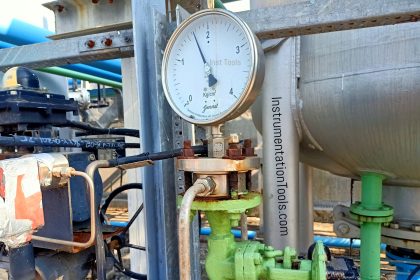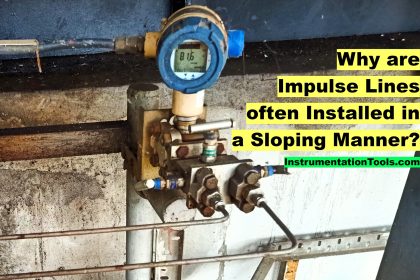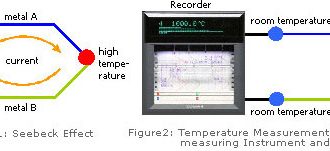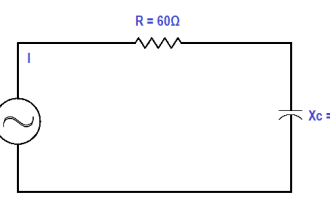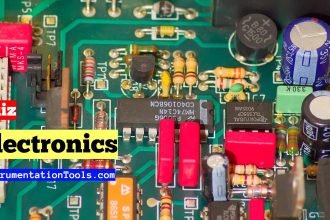Bourdon tube pressure gauge
when an elastic transducer ( bourdon tube in this case ) is subjected to a pressure, it defects. This deflection is proportional to the applied pressure when calibrated.
Description of Bourdon tube Pressure Gauge
The main parts of this instruments are as follows:
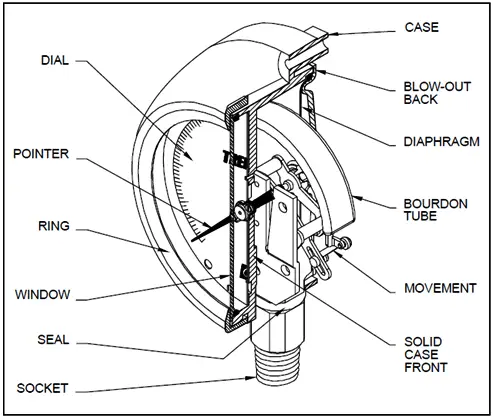
An elastic transducer, that is bourdon tube which is fixed and open at one end to receive the pressure which is to be measured. The other end of the bourdon tube is free and closed.
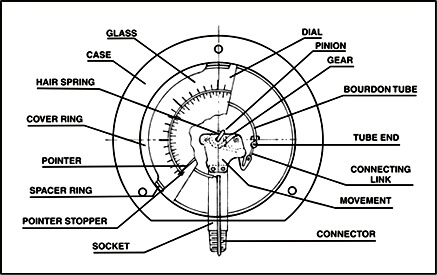
The cross-section of the bourdon tube is eliptical. The bourdon tube is in a bent form to look like a circular arc. To the free end of the bourdon tube is attached an adjustable link, which is in-turn connected to a sector and pinion as shown in diagram. To the shaft of the pinion is connected a pointer which sweeps over a pressure calibrated scale.
Operation of Bourdon tube
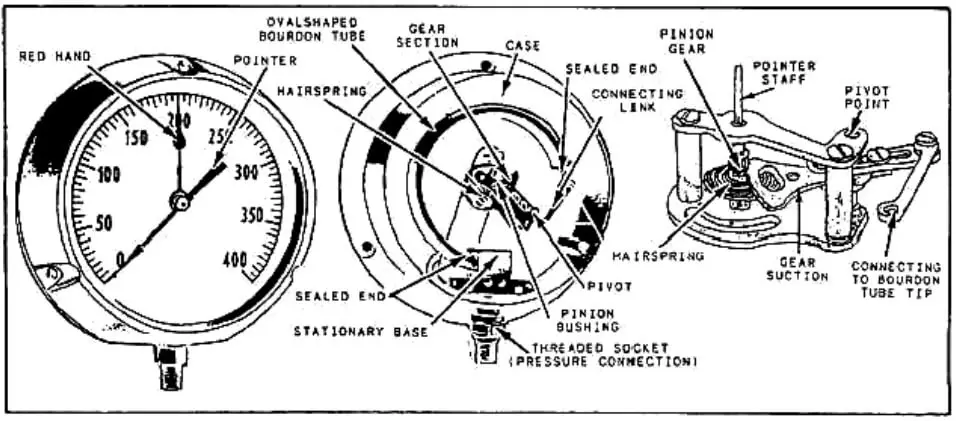
This displacement of the free closed end of the bourdon tube is proportional to the applied pressure. As the free end of the bourdon tube is connected to a link – section – pinion arrangement, the displacement is amplified and converted to a rotary motion of the pinion.
Also See : Bourdon Pressure Gauge Animation
As the pinion rotates, it makes the pointer to assume a new position on a pressure calibrated scale to indicate the applied pressure directly. As the pressure in the case containing the bourdon tube is usually atmospheric, the pointer indicates gauge pressure.
Applications of Bourdon Tube pressure gauge
They are used to measure medium to very high pressures.
Advantages of Bourdon tube pressure gauge
- These Bourdon tube pressure gauges give accurate results.
- Bourdon tube cost low.
- Bourdon tube are simple in construction.
- They can be modified to give electrical outputs.
- They are safe even for high pressure measurement.
- Accuracy is high especially at high pressures.
Limitations of bourdon tube pressure gauge
- They respond slowly to changes in pressure
- They are subjected to hysteresis.
- They are sensitive to shocks and vibrations.
- Amplification is a must as the displacement of the free end of the bourdon tube is low.
- It cannot be used for precision measurement.

